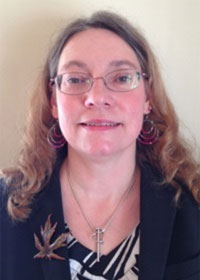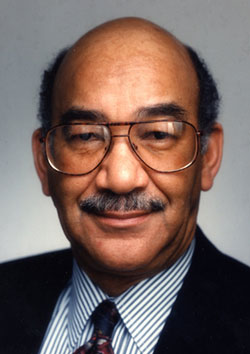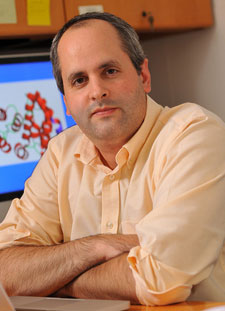I’m the director of the newly created NIH Office of Emergency Care Research (OECR), which is housed in NIGMS. For the past 11 years, I was an emergency medicine physician and clinical researcher. So you might be wondering why I’m writing a post for a blog primarily read by thousands of basic scientists. Don’t stop reading, though, because OECR and NIGMS-funded research have more in common than you might think. Let’s take a quick look at one area where basic and emergency medicine research interests converge—sepsis.
NIGMS supports both fundamental studies and clinical research on sepsis, including the PRoCESS (Protocolized Care for Early Septic Shock) clinical trial. This study is designed to determine if early intervention with rigorous, standardized care in sepsis and septic shock can improve clinical outcomes. It’s an astonishingly important effort to address a disease that often presents to the emergency department and that has a mortality rate of about 30 percent. Should the study demonstrate improved outcomes, it will change the care of some 750,000 Americans who develop sepsis each year.
In addition to sepsis, NIGMS funds research in other areas relevant to emergency medicine, including trauma, burn injury, wound healing, and anesthesia.
I’m committed to helping all parts of NIH improve outcomes for patients in need of emergency treatment, and stepping into the OECR position is allowing me to focus on the national challenges that face emergency medicine research. Toward this end, OECR has four objectives:
- To develop and refine NIH’s existing research portfolios in emergency care;
- To coordinate research projects that involve multiple NIH components;
- To create ways to fund new research that impacts patients with time-sensitive medical conditions; and
- To promote the training of the next generation of emergency care researchers.
It’s a big mission for a small office, but we are fortunate to have many energetic partners across NIGMS, NIH and the broader community.
Whether you’re a basic scientist or a clinician, the ultimate goals are the same, so I welcome your interest in and input on OECR activities.


 I’m pleased to introduce you to Susan Gregurick, the new director of our
I’m pleased to introduce you to Susan Gregurick, the new director of our  Last July, I announced the creation of a trans-NIH Office of Emergency Care Research (OECR) housed in NIGMS. OECR now has a permanent director: Jeremy Brown, M.D. His NIH appointment will begin in July.
Last July, I announced the creation of a trans-NIH Office of Emergency Care Research (OECR) housed in NIGMS. OECR now has a permanent director: Jeremy Brown, M.D. His NIH appointment will begin in July. For 10 years, our
For 10 years, our  We were very sad to learn of the death of Adolphus Toliver, Ph.D., on March 26. Dr. Toliver–or Tol, as he preferred to be called–was a staunch supporter of diversity. His vision and dedication to increasing the participation of underrepresented minority students in biomedical research resulted in the development and improvement of many NIH programs.
We were very sad to learn of the death of Adolphus Toliver, Ph.D., on March 26. Dr. Toliver–or Tol, as he preferred to be called–was a staunch supporter of diversity. His vision and dedication to increasing the participation of underrepresented minority students in biomedical research resulted in the development and improvement of many NIH programs.
